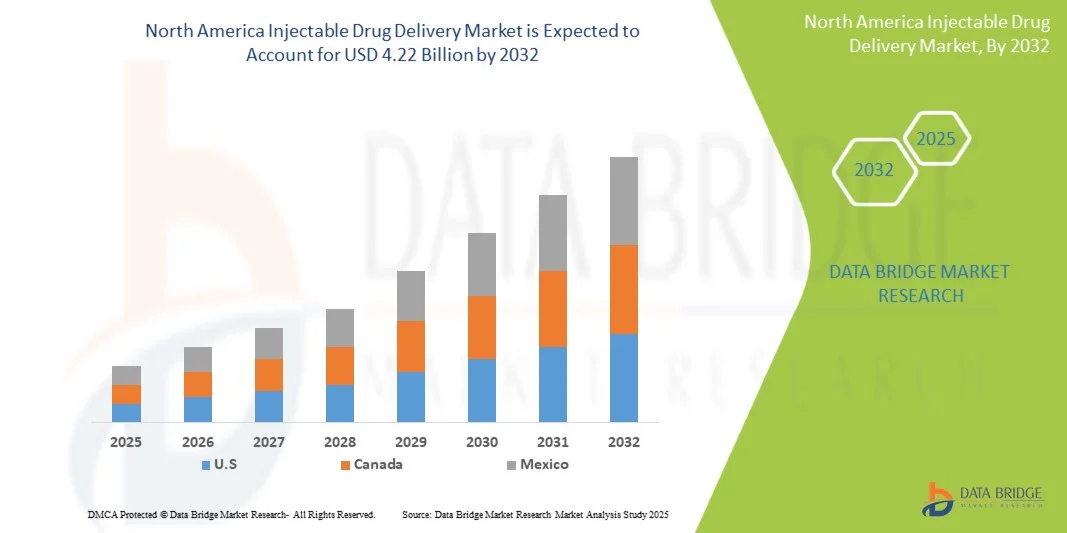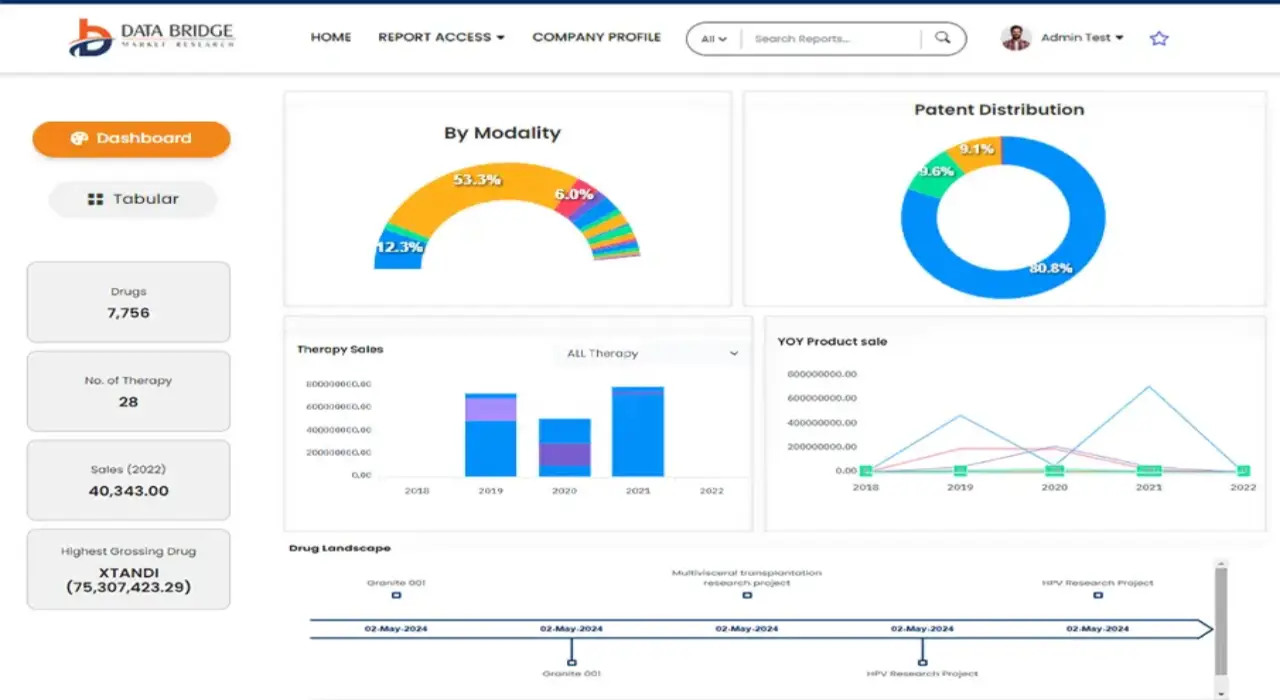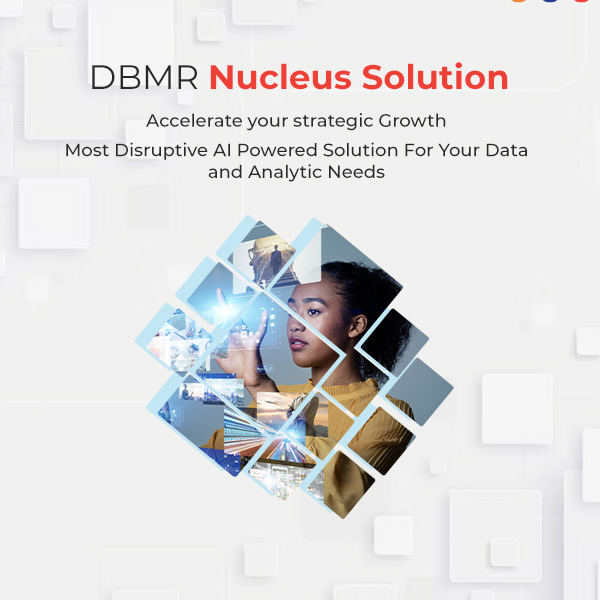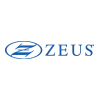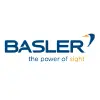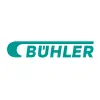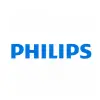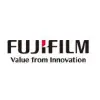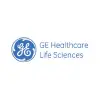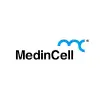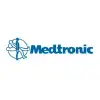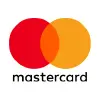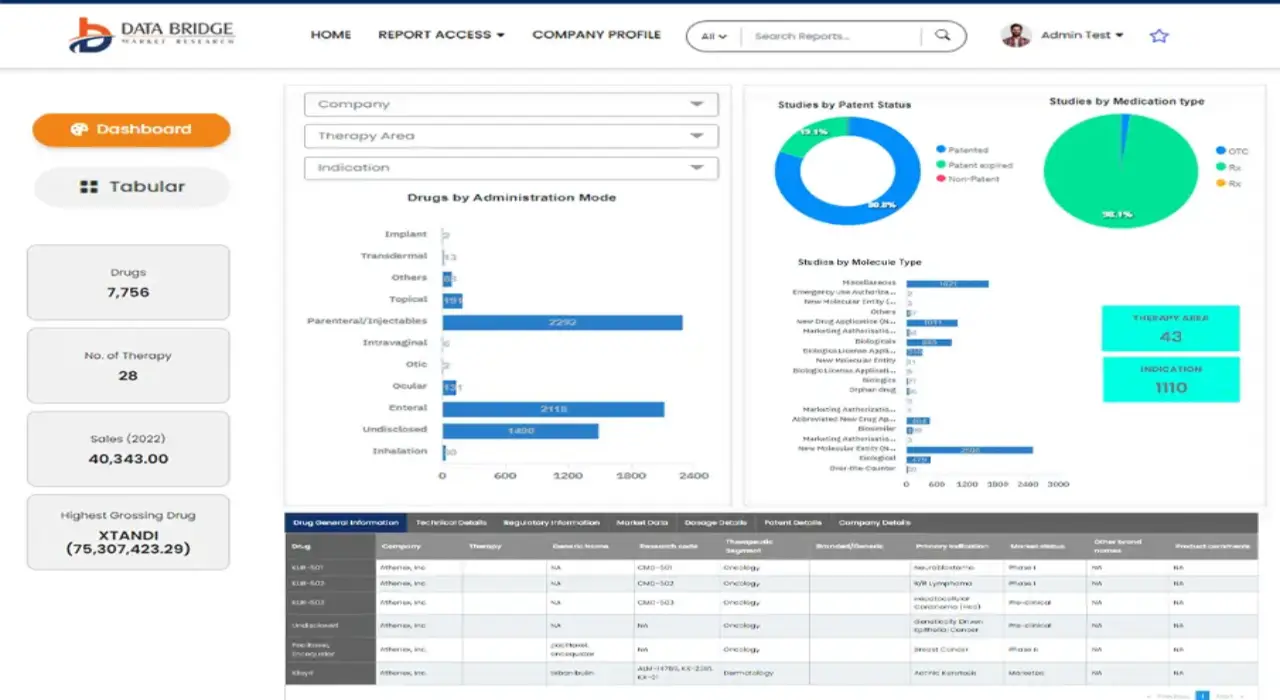North America Injectable Drug Delivery Market
Market Size in USD Billion
CAGR :
% 
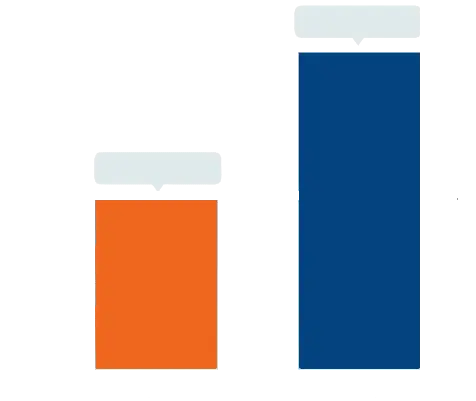 USD
1.78 Billion
USD
4.22 Billion
2024
2032
USD
1.78 Billion
USD
4.22 Billion
2024
2032
| 2025 –2032 | |
| USD 1.78 Billion | |
| USD 4.22 Billion | |
|
|
|
|
North America Injectable Drug Delivery Market segmentation, By Type (Injectable Drug Delivery Devices, and Injectable Drug Delivery Formulation), Usage Pattern (Curative Care, Immunization, and Other), Mode Of Administration (Skin, Circulatory/Muskoskeletal, Organs, and Central Nervous System), Application (Autoimmune Disease, Hormonal Disorders, Orphan Diseases, Oncology, and Others), End User (Hospitals and Clinics, Home Healthcare, Research Laboratories, Pharmaceutical and Biotechnological Companies, and Others), Distribution Channel (Hospital Pharmacy, Pharmacy Stores, Direct Tender, and Online Pharmacy) - Industry Trends and Forecast to 2032
North America Injectable Drug Delivery Market Size
- The North America Injectable Drug Delivery Market size was valued at USD 1.78 billion in 2024 and is expected to reach USD 4.22 billion by 2032, at a CAGR of 11.40% during the forecast period
- The market growth is largely fueled by the rising prevalence of chronic diseases, increasing geriatric population, and growing demand for self-administration and homecare therapies, which are driving the adoption of injectable drug delivery systems
- Furthermore, technological advancements in drug delivery devices, such as prefilled syringes, auto-injectors, pen injectors, and wearable injectors, are improving ease of use, dosing accuracy, and patient compliance, thereby significantly boosting market growth
North America Injectable Drug Delivery Market Analysis
- Injectable drug delivery systems, including prefilled syringes, auto-injectors, and pen injectors, are increasingly essential in modern healthcare, enabling precise and safe administration of medications in both hospitals and homecare settings
- The escalating demand for injectable drug delivery is primarily driven by rising prevalence of chronic diseases, increased self-administration therapies, and technological innovations enhancing drug safety, accuracy, and patient convenience
- U.S. dominated the North America Injectable Drug Delivery Market with the largest revenue share of 88.2% in 2024, driven by advanced healthcare infrastructure, high adoption of biologics and vaccines, and the strong presence of leading market players. Growth is supported by extensive hospital and outpatient adoption of prefilled syringes and other injectable systems, continuous innovations for safety and dose accuracy, and increasing demand for efficient drug delivery solutions
- Canada is expected to witness the fastest growth in North America Injectable Drug Delivery Market, with a projected CAGR from 2025 to 2032, fueled by increasing adoption of auto-injectors and other self-administration devices, rising prevalence of chronic diseases, and growing awareness of homecare treatment options
- The Injectable Drug Delivery Devices segment dominated the North America Injectable Drug Delivery Market with a 57.3% revenue share in 2024, driven by widespread adoption of prefilled syringes, auto-injectors, and wearable injectors for chronic and specialty therapies
Report Scope and North America Injectable Drug Delivery Market Segmentation
|
Attributes |
Injectable Drug Delivery Key Market Insights |
|
Segments Covered |
|
|
Countries Covered |
North America
|
|
Key Market Players |
|
|
Market Opportunities |
|
|
Value Added Data Infosets |
In addition to the insights on market scenarios such as market value, growth rate, segmentation, geographical coverage, and major players, the market reports curated by the Data Bridge Market Research also include in-depth expert analysis, pricing analysis, brand share analysis, consumer survey, demography analysis, supply chain analysis, value chain analysis, raw material/consumables overview, vendor selection criteria, PESTLE Analysis, Porter Analysis, and regulatory framework. |
North America Injectable Drug Delivery Market Trends
“Rising Adoption Driven by Patient Convenience and Advanced Delivery Systems”
- A significant trend in the North America Injectable Drug Delivery Market is the increasing adoption of user-friendly devices that enhance patient convenience and compliance. Prefilled syringes, auto-injectors, pen injectors, and wearable injectors are becoming widely preferred due to their ease of use and accurate dosing capabilities
- For instance, major pharmaceutical companies are designing devices that allow self-administration at home, reducing the need for frequent hospital visits and supporting chronic disease management and immunization programs
- Advanced features in injectable devices, such as dose memory, safety needles, and ergonomic designs, are helping patients administer medication accurately and safely, which is particularly important for therapies requiring repeated dosing or for biologics with narrow therapeutic windows
- The integration of digital monitoring and tracking capabilities in some devices allows healthcare providers to monitor adherence remotely, improving treatment outcomes and enabling more personalized care
- Patient-centric designs, including pain-reducing needle technologies and compact, portable devices, are further increasing acceptance of injectable drug delivery systems across diverse populations, including elderly patients and those with mobility challenges
- The trend toward home-based healthcare and self-administration is further reinforced by rising awareness of chronic diseases, patient education initiatives, and the need for timely treatment delivery in both urban and rural areas
- Pharmaceutical companies are actively collaborating with device manufacturers to develop innovative delivery systems that combine safety, convenience, and precision, creating a robust pipeline of advanced injectable devices
- The growing preference for minimally invasive drug delivery methods and improved patient adherence is driving adoption across therapeutic areas such as oncology, autoimmune diseases, hormonal disorders, and rare/orphan diseases
- Overall, these developments are positioning injectable drug delivery systems as essential tools in modern healthcare, offering significant opportunities for market expansion and innovation
North America Injectable Drug Delivery Market Dynamics
Driver
“Growing Need Due to Rising Demand for Efficient Drug Delivery”
- The increasing prevalence of chronic and infectious diseases, along with the rising demand for biologics and vaccines, is a significant driver for the heightened adoption of injectable drug delivery systems
- For instance: In April 2024, BD (Becton, Dickinson and Company) announced advancements in IoT-enabled temperature-monitoring and storage systems for injectable therapeutics. The company plans to integrate state-of-the-art sensors to ensure optimal storage conditions, monitor environmental factors such as temperature fluctuations and humidity, and maintain the efficacy and safety of injectable drugs. This initiative reflects BD's commitment to enhancing the safety, reliability, and efficiency of injectable drug handling. Such innovations by key players are expected to propel the North America Injectable Drug Delivery Market during the forecast period
- As healthcare providers prioritize accurate dosing, safety, and patient compliance, injectable drug delivery systems—including prefilled syringes, auto-injectors, and pen injectors—offer advantages over traditional administration methods, ensuring precise dosing and reducing medication errors
- Furthermore, the growing emphasis on home-based care and outpatient treatments is driving the demand for user-friendly and portable delivery systems, enabling patients to self-administer medications safely
- The convenience of ready-to-use devices, reduction in preparation time, and enhanced sterility are key factors boosting adoption across hospitals, clinics, and homecare settings. Continuous innovations such as ergonomic designs, compatibility with automated systems, and enhanced drug stability further strengthen market growth
Restraint/Challenge
“High Costs and Regulatory Compliance Requirements”
- High development and manufacturing costs of advanced injectable drug delivery systems pose a challenge for broader market adoption, particularly in price-sensitive regions. Premium features, such as auto-injectors with integrated safety mechanisms or prefilled syringes with enhanced sterility, can make these devices less affordable for some healthcare facilities or patients
- Strict regulatory requirements and quality standards for injectable devices, including approvals from FDA, EMA, and other agencies, can delay product launches and increase time-to-market for new solutions
- Addressing these challenges requires investment in cost-effective manufacturing, regulatory expertise, and quality assurance protocols to ensure compliance and patient safety. Companies focusing on scalable, efficient production and innovative designs are better positioned to overcome these barriers
- While costs are gradually decreasing with technological advancements and mass production, the perceived high price and complexity of some advanced systems may still limit adoption in certain regions or smaller healthcare setups
- Continuous development of affordable, reliable, and easy-to-use injectable drug delivery systems, along with robust training for healthcare professionals and patient education, will be crucial for sustained market expansion and increased penetration globally
North America Injectable Drug Delivery Market Scope
The market is segmented on the basis of type, usage pattern, mode of administration, application, end user, and distribution channel.
• By Type
On the basis of type, the North America Injectable Drug Delivery Market is segmented into injectable drug delivery devices and injectable drug delivery formulations. The injectable drug delivery devices segment dominated the market with a 57.3% revenue share in 2024, driven by widespread adoption of prefilled syringes, auto-injectors, and wearable injectors for chronic and specialty therapies. The demand is fueled by their precision, safety features, and patient-friendly designs that enable self-administration at home or in clinics. Hospitals and pharmaceutical companies prefer these devices for controlled dosing, reduced medication errors, and enhanced compliance. Integration with digital monitoring systems and innovations in ergonomic design further support their dominance. In addition, healthcare professionals trust device-based delivery for injectable biologics, vaccines, and high-risk medications. Regulatory approvals and rising awareness about safe drug delivery methods also contribute to this segment’s leadership.
The injectable drug delivery formulations segment is expected to witness the fastest CAGR of 12.5% from 2025 to 2032, driven by increasing development of biologics, monoclonal antibodies, and advanced formulations for targeted delivery. Formulations offering higher stability, reduced immunogenicity, and patient-centric properties are gaining preference. The growth is supported by expanding research in specialty therapies, oncology, and autoimmune diseases. Rising demand from both hospital and homecare settings for versatile, ready-to-use formulations accelerates adoption. Increasing investments in R&D, growing prevalence of chronic diseases, and the need for precision medicine further boost growth. Formulations enabling combination therapies and reduced injection frequency are also contributing to faster market expansion.
• By Usage Pattern
On the basis of usage pattern, the market is segmented into curative care, immunization, and other. The Curative Care segment held the largest revenue share of 49.8% in 2024, supported by its extensive application in managing chronic diseases, autoimmune disorders, and oncology treatments. Hospitals and clinics prioritize curative injectable therapies for consistent dosing and patient safety. Growth is reinforced by government healthcare initiatives, insurance coverage, and the rising adoption of home-based curative care. Increasing prevalence of diabetes, cardiovascular conditions, and other chronic ailments contributes to high device utilization. Integration with patient monitoring systems further strengthens adoption. Availability of prefilled and auto-injector devices improves compliance and reduces errors. The segment also benefits from increasing healthcare infrastructure and rising awareness of minimally invasive treatment options.
The immunization segment is expected to witness the fastest CAGR of 11.7% from 2025 to 2032, driven by widespread vaccination campaigns, government-led initiatives, and growing preventive healthcare awareness. Expansion of immunization programs across schools, workplaces, and homecare settings is accelerating demand. The trend of developing combination vaccines and single-dose delivery formats contributes to growth. Pharmaceutical companies are innovating to improve storage stability, efficacy, and patient convenience. Increased focus on adult immunization and booster programs also supports faster adoption. The segment benefits from rising public health awareness, enhanced distribution networks, and increased accessibility of vaccines in rural and urban regions.
• By Mode of Administration
On the basis of mode of administration, the market is segmented into skin, circulatory/muskoskeletal, organs, and central nervous system. The Skin administration segment dominated with a 53.6% revenue share in 2024, largely due to convenience and safety of subcutaneous and intradermal injections. It is widely adopted for chronic therapies, immunizations, and patient self-administration. Hospitals and clinics prefer skin-based delivery for its accuracy, minimal invasiveness, and reduced risk of infection. Prefilled syringes and auto-injectors enhance usability. The segment also benefits from patient-friendly designs, reduced pain during administration, and higher compliance rates. Regulatory support and growing awareness of safe injection techniques further boost its dominance. Rising adoption in homecare and outpatient settings strengthens the segment’s market leadership.
The circulatory/muskoskeletal segment is expected to witness the fastest CAGR of 10.9% from 2025 to 2032, driven by increasing use of intravenous and intramuscular injections for targeted drug delivery. Hospitals, specialty clinics, and homecare providers are adopting these methods for oncology, autoimmune, and pain management therapies. Rising demand for high-dose biologics and complex therapies accelerates segment growth. Technological advancements in delivery devices, patient safety enhancements, and improved dosage accuracy support rapid adoption. Growing prevalence of musculoskeletal disorders, cardiovascular diseases, and trauma-related treatments further contribute to faster growth.
• By Application
On the basis of application, the market is segmented into autoimmune disease, hormonal disorders, orphan diseases, oncology, and others. The Oncology segment accounted for the largest revenue share of 41.5% in 2024, driven by the increasing prevalence of cancer and the adoption of injectable biologics for targeted therapies. Hospitals and oncology clinics prefer injectable solutions for precision dosing and reduced treatment errors. Rising R&D in cancer therapeutics, insurance coverage, and adoption of combination therapies support dominance. The segment benefits from high patient compliance, homecare integration, and availability of advanced auto-injectors and prefilled syringes. Continuous innovation in oncology formulations, along with government initiatives for cancer care, further strengthens the segment’s leadership.
The autoimmune disease segment is expected to witness the fastest CAGR of 13.2% from 2025 to 2032, fueled by increasing incidence of autoimmune conditions like rheumatoid arthritis, multiple sclerosis, and psoriasis. Biologics and specialty therapies administered via injectables are gaining traction. Homecare adoption, convenience of self-administration, and awareness of early intervention accelerate growth. Technological advancements in delivery devices, combination therapies, and patient-centric formulations also contribute. Pharmaceutical companies are expanding product portfolios for autoimmune treatments, driving rapid adoption. Rising government and insurance support enhances accessibility and affordability, further boosting growth.
• By End User
On the basis of end user, the market is segmented into hospitals and clinics, home healthcare, research laboratories, pharmaceutical and biotechnological companies, and others. The Hospitals and Clinics segment dominated with a 50% revenue share in 2024, due to implementation of injectable therapies for chronic, oncology, and autoimmune treatments. Hospitals leverage trained personnel and advanced infrastructure to ensure accurate dosing and patient safety. Preference for prefilled syringes, auto-injectors, and digital monitoring supports adoption. Increasing hospital expansion, advanced oncology centers, and integration with clinical care pathways contribute to dominance. Government funding, insurance coverage, and patient trust in clinical administration also reinforce growth.
The home healthcare segment is expected to witness the fastest CAGR of 12.8% from 2025 to 2032, driven by the rising trend of self-administration, patient convenience, and remote monitoring technologies. Increasing awareness of homecare solutions and chronic disease management supports adoption. Prefilled and auto-injector devices are designed for easy home use, enhancing patient compliance. Growth is further fueled by insurance coverage for homecare therapies, availability of educational programs, and support services for patients. Rising demand for at-home oncology, autoimmune, and diabetes care accelerates adoption.
• By Distribution Channel
On the basis of distribution channel, the market is segmented into hospital pharmacy, pharmacy stores, direct tender, and online pharmacy. The hospital pharmacy segment held the largest revenue share of 46.7% in 2024, primarily due to the direct availability of injectable therapies within hospitals and clinics where trained healthcare personnel can administer them safely. This segment is favored for its reliability, high-volume supply capabilities, and immediate accessibility during patient care. Hospitals and clinics prefer hospital pharmacies as they ensure proper storage, handling, and compliance with regulatory standards, minimizing the risk of errors and contamination. Furthermore, hospital pharmacies play a critical role in supporting specialty therapies and complex treatment regimens, including oncology and autoimmune therapies. The established trust in hospital pharmacy networks, combined with integrated supply chains, contributes to their market dominance.
The online pharmacy segment is expected to witness the fastest CAGR of 14.1% from 2025 to 2032, fueled by the rising trend of doorstep delivery and the convenience of accessing prescription-based injectable therapies from home. Growth is supported by the increasing penetration of e-commerce platforms, enhanced logistics, and rising consumer preference for digital healthcare solutions. Patients benefit from the ease of reordering, subscription models, and timely delivery, reducing the need for frequent hospital visits. In addition, online pharmacies are expanding their offerings to include educational support, remote consultations, and patient assistance programs, further enhancing adoption. The segment’s rapid growth is also driven by technological innovations, improved regulatory frameworks, and heightened awareness of online healthcare services.
North America Injectable Drug Delivery Market Regional Analysis
- U.S. dominated the North America Injectable Drug Delivery Market with the largest revenue share of 88.2% in 2024, driven by advanced healthcare infrastructure, high adoption of biologics and vaccines, and the strong presence of leading market players. Growth is supported by extensive hospital and outpatient adoption of prefilled syringes and other injectable systems, continuous innovations for safety and dose accuracy, and increasing demand for efficient drug delivery solutions
- Canada is expected to witness the fastest growth in North America Injectable Drug Delivery Market, with a projected CAGR from 2025 to 2032, fueled by increasing adoption of auto-injectors and other self-administration devices, rising prevalence of chronic diseases, and growing awareness of homecare treatment options
- The region benefits from a well-established hospital network, robust regulatory frameworks, and increasing demand for efficient, safe, and patient-friendly drug delivery systems
U.S. North America Injectable Drug Delivery Market Insight
The U.S. the North America Injectable Drug Delivery Market captured the largest revenue share of 88.2% within North America in 2024, reflecting the country’s leadership in the injectable drug delivery sector. The market growth is fueled by the extensive adoption of prefilled syringes, auto-injectors, and other innovative delivery devices across hospitals, outpatient clinics, and specialty care centers. Continuous advancements in device safety, dose accuracy, and ease of administration, along with strong government and private investments in biologics and vaccine programs, reinforce the U.S. dominance. Additionally, rising awareness of efficient drug delivery solutions and growing demand for homecare treatments contribute to sustained market expansion.
Canada North America Injectable Drug Delivery Market Insight
Canada the North America Injectable Drug Delivery Market is expected to witness the fastest growth in North America, with a projected CAGR of 9.1% from 2025 to 2032. This growth is primarily driven by increasing adoption of auto-injectors and self-administration devices, supported by a rising prevalence of chronic diseases and growing patient preference for home-based treatment. The Canadian market is benefiting from innovations that focus on patient convenience, safety, and portability, along with government initiatives promoting accessibility to advanced drug delivery solutions. Expanding homecare therapy awareness and favorable reimbursement policies further accelerate adoption across both residential and clinical settings.
North America Injectable Drug Delivery Market Share
The injectable drug delivery industry is primarily led by well-established companies, including:
- Baxter (U.S.)
- BD (U.S.)
- Gerresheimer AG (Germany)
- Pfizer, Inc. (U.S.)
- Schott AG (Germany)
- Alkermes Plc. (Ireland)
- Lilly USA, LLC. (U.S.)
- Sandoz (Switzerland)
- Terumo Corporation (Japan)
- Teva Pharmaceuticals Industries Ltd. (Israel)
- Ypsomed (Switzerland)
- Bespak Limited (U.K.)
Latest Developments in North America Injectable Drug Delivery Market
- In April 2024, Eli Lilly and Company announced the acquisition of a 100,000-square-foot injectable medicine manufacturing facility from Nexus Pharmaceuticals in Pleasant Prairie, Wisconsin. This acquisition is part of Lilly’s strategy to expand its U.S. manufacturing capacity to meet the growing demand for its injectable products, including Mounjaro and Zepbound. The facility is FDA-approved and will exclusively produce Lilly's medicines. The expansion underscores Lilly's commitment to increasing production capabilities to serve patients more effectively
- In June 2024, Novo Nordisk announced a USD4.1 billion investment to build a second fill-and-finish manufacturing site in Clayton, North Carolina. This facility aims to enhance production of injectable treatments for obesity and other chronic diseases, including Wegovy and Ozempic. The expansion is expected to create approximately 1,000 new jobs and increase the company's ability to meet the rising demand for these medications
- In December 2023, Gerresheimer, a German medical device manufacturer, announced an USD88 million investment to expand its manufacturing operations in Peachtree City, Georgia. The expansion involves constructing a new 160,000-square-foot facility focused on producing autoinjectors for injectable drugs. The new facility is expected to be operational by fall 2024 and will create over 200 new jobs, contributing to the local economy and supporting the growing demand for injectable drug delivery systems
- In November 2023, Catalent, a leading provider of advanced delivery technologies, announced plans to expand its fill-and-finish operations in Bloomington, Indiana, and Anagni, Italy, to support the growing demand for injectable weight-loss drugs. The company anticipates that revenue from GLP-1 drug deliveries will exceed USD500 million, up from less than USD100 million forecasted for fiscal 2024. This expansion reflects Catalent's commitment to increasing production capacity to meet the needs of the rapidly growing injectable drug market
SKU-
Get online access to the report on the World's First Market Intelligence Cloud
- Interactive Data Analysis Dashboard
- Company Analysis Dashboard for high growth potential opportunities
- Research Analyst Access for customization & queries
- Competitor Analysis with Interactive dashboard
- Latest News, Updates & Trend analysis
- Harness the Power of Benchmark Analysis for Comprehensive Competitor Tracking
Research Methodology
Data collection and base year analysis are done using data collection modules with large sample sizes. The stage includes obtaining market information or related data through various sources and strategies. It includes examining and planning all the data acquired from the past in advance. It likewise envelops the examination of information inconsistencies seen across different information sources. The market data is analysed and estimated using market statistical and coherent models. Also, market share analysis and key trend analysis are the major success factors in the market report. To know more, please request an analyst call or drop down your inquiry.
The key research methodology used by DBMR research team is data triangulation which involves data mining, analysis of the impact of data variables on the market and primary (industry expert) validation. Data models include Vendor Positioning Grid, Market Time Line Analysis, Market Overview and Guide, Company Positioning Grid, Patent Analysis, Pricing Analysis, Company Market Share Analysis, Standards of Measurement, Global versus Regional and Vendor Share Analysis. To know more about the research methodology, drop in an inquiry to speak to our industry experts.
Customization Available
Data Bridge Market Research is a leader in advanced formative research. We take pride in servicing our existing and new customers with data and analysis that match and suits their goal. The report can be customized to include price trend analysis of target brands understanding the market for additional countries (ask for the list of countries), clinical trial results data, literature review, refurbished market and product base analysis. Market analysis of target competitors can be analyzed from technology-based analysis to market portfolio strategies. We can add as many competitors that you require data about in the format and data style you are looking for. Our team of analysts can also provide you data in crude raw excel files pivot tables (Fact book) or can assist you in creating presentations from the data sets available in the report.
